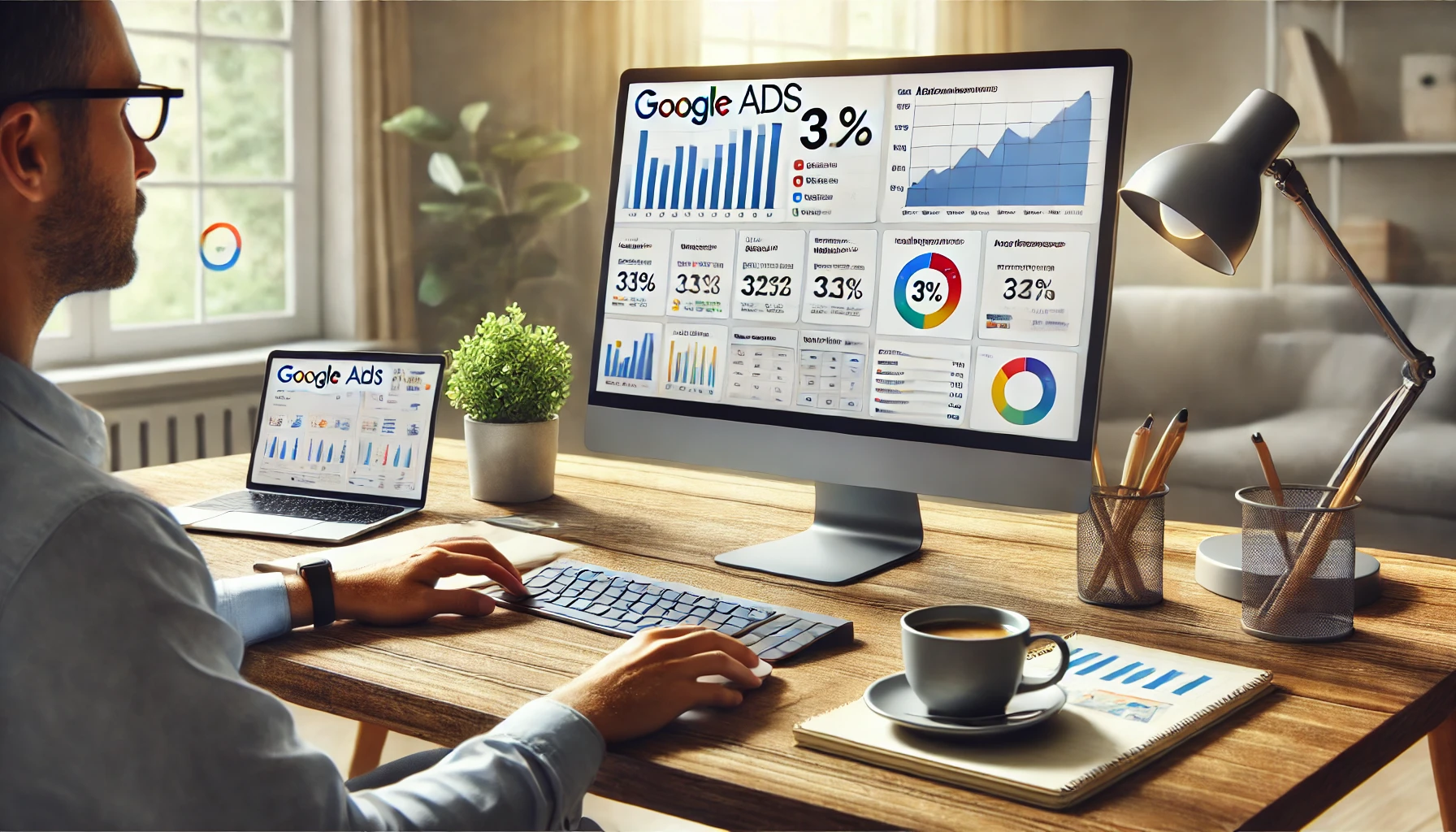Google Ads is an online advertising platform that allows businesses to reach a wider audience. With over 3.5 billion Google searches daily, using Google Ads to target specific keywords ensures your business appears in front of the right people. Let’s explore why Google Ads should be a key part of your marketing strategy:
- Wide Reach: Google Ads provides access to billions of users globally, ensuring your ads are seen by a vast and varied audience.
- Targeted Advertising: You can target specific demographics, locations, times of day, devices, and even the user’s search intent, making your ads highly relevant.
- Budget Flexibility: Google Ads allows businesses of any size to start advertising with a budget that suits their needs. You can control costs through bidding strategies and daily budget limits.
Setting Up Google Ads for Success
To get the best results, you need to set up your Google Ads campaigns correctly. Here’s how to get started:
1. Define Your Goals and Objectives
Before launching any campaign, it’s essential to have clear objectives. Are you looking to generate sales, increase website traffic, or promote a specific product or service? Define what success looks like to ensure that your campaigns are aligned with your business goals.
- Sales Generation: If you are aiming for sales, focus on keywords that reflect strong buying intent.
- Lead Generation: For lead generation, you might use keywords related to inquiries and free trials.
- Brand Awareness: If you’re focusing on brand awareness, you could opt for keywords with high search volume and lower competition.
2. Conduct Keyword Research
The heart of any successful Google Ads campaign is keyword research. Using tools like Google Keyword Planner, identify keywords relevant to your business that customers are actively searching for.
- Focus on Long-Tail Keywords: These are more specific and less competitive, often leading to higher conversion rates.
- Use Negative Keywords: Filter out irrelevant search terms by using negative keywords to prevent your ads from showing for unrelated queries.
3. Create Targeted Ads
Your ad copy should be compelling and align with the search intent of the keywords you’re targeting. Each ad needs a strong headline and description to encourage clicks. Here are some tips for creating effective ads:
- Headline: Include your primary keyword and a call-to-action (CTA), such as “Buy Now” or “Get Started.”
- Ad Copy: Make it clear what the user will gain by clicking your ad. Include benefits or features of your product or service.
- CTA: Every ad must have a clear, actionable CTA to guide users toward the next step (e.g., “Sign Up Today” or “Call Now”).
4. Optimize Landing Pages
A highly relevant ad should lead to a landing page that is optimized for conversions. When the user clicks on your ad, they should be directed to a page that delivers on the promise made in the ad. Consider the following:
- Fast Load Time: Ensure your landing page loads quickly to prevent high bounce rates.
- Clear CTA: Just like your ad, your landing page should have a strong call to action that’s easy to find.
- Mobile-Friendly: A large portion of users will visit your landing page on mobile devices, so it’s crucial to ensure the page is responsive.
5. Set Your Budget and Bidding Strategy
Google Ads works on a bidding system, meaning you decide how much you are willing to pay for a click.
- Cost-Per-Click (CPC) Bidding: This is ideal if you want to focus on driving traffic to your website.
- Cost-Per-Action (CPA) Bidding: This is suitable for businesses focusing on conversions, like purchases or sign-ups.
- Target Return on Ad Spend (ROAS): Set a target for the return you want from your ad spend. Google Ads will automatically optimize your bidding to meet your goals.
You can set a daily or monthly budget to control spending, and you can adjust the budget based on the performance of the campaign.
Analyzing Performance and Making Adjustments
To get the most out of Google Ads, it’s important to monitor your campaigns and adjust as needed. Google Ads provides a variety of metrics to track, including:
- Click-Through Rate (CTR): Measures how often people click on your ad after seeing it. A high CTR indicates your ad copy is compelling and relevant.
- Conversion Rate: This shows the percentage of clicks that result in a desired action (e.g., sale, sign-up).
- Quality Score: Google uses this metric to measure the quality of your keywords, ads, and landing pages. A higher Quality Score can lead to lower costs per click.
By regularly reviewing these metrics, you can make data-driven decisions to optimize your campaigns for better results.
Common Google Ads Mistakes to Avoid
While Google Ads can drive significant business growth, there are common mistakes that can drain your budget. Here are some pitfalls to avoid:
- Targeting Too Broadly: Aiming for broad keywords can result in irrelevant clicks. Focus on more specific, long-tail keywords to attract more qualified leads.
- Ignoring Mobile Users: With the increase in mobile traffic, ensure that your ads and landing pages are mobile-friendly.
- Not Using Ad Extensions: Ad extensions provide additional information and can improve ad visibility. Make sure to use them to stand out in search results.
- Setting and Forgetting: Google Ads campaigns need constant optimization. Regularly review your campaigns to tweak keywords, adjust budgets, and update ad copy.
Conclusion: Growing Your Customer Base with Google Ads
Google Ads is a powerful tool for businesses looking to attract more customers. By defining clear goals, conducting thorough keyword research, creating compelling ads, and optimizing your campaigns, you can significantly increase your chances of success. Remember, the key to leveraging Google Ads effectively is continuous testing and optimization. By staying on top of your campaigns and adjusting strategies as necessary, you’ll see long-term growth and a steady stream of customers.
